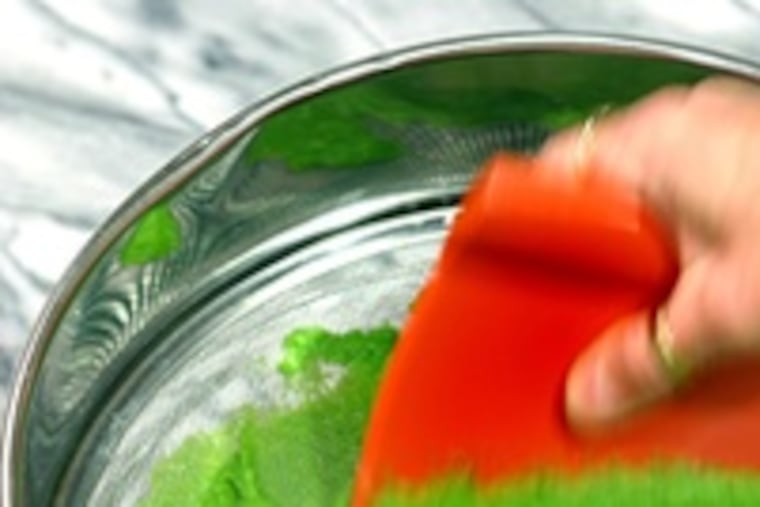Old-fashioned tamis is a tool of many uses
Gnocchi light as clouds, sauces so smooth they're like velvet, macarons that dissolve to nothing in your mouth, pates and mousses as fine as Irish butter, a rain of Parmesan like fine dust. Achieving such kitchen refinement doesn't take a closetful of expensive gadgets - nor a wave of Harry Potter's wand - just a single old-fashioned tool.

Gnocchi light as clouds, sauces so smooth they're like velvet, macarons that dissolve to nothing in your mouth, pates and mousses as fine as Irish butter, a rain of Parmesan like fine dust. Achieving such kitchen refinement doesn't take a closetful of expensive gadgets - nor a wave of Harry Potter's wand - just a single old-fashioned tool.
It's called a tamis, or drum sieve, and it looks like a cross between an ordinary strainer and your rock-star son's snare drum. It dates to around the Middle Ages, and it's been used in professional kitchens pretty much since.
"It's one of the most important tools in our kitchen," says chef Thomas Keller of the French Laundry in California's Napa Valley, "because it's what gives food that sense of refinement. In our restaurant it's in use constantly." Keller says it's the key to dishes as diverse as English pea soup, fish mousse and mashed potatoes; he even uses his as a steamer.
It couldn't be easier to use. Just place the tamis (rhymes with "whammy") over a bowl, then spoon whatever you want to sieve onto the center of the fine metal mesh and push the food through, using a plastic bowl scraper.
Boiled potatoes or blanched English peas might take a few minutes to press through, while a coulis of fresh blackberries needs only a few swipes.
Sifting is even easier: Flour or powdered sugar might take a little pressure if there are lumps, but often a few taps on the tamis' side is all it takes to translate coarse flours into fine dust.
The tamis' genius is in its design. Because it's flat, you can take advantage of the sweep of the surface, and apply downward pressure by pulling across, without much effort.
Because of this, a tamis can do what neither a conventional strainer nor a chinois (a china cap, or conical strainer) can easily achieve: It can strain quickly and very finely. It's like a study in applied plane geometry. (Imagine Euclid in the kitchen, studying a bowlful of potatoes.)
"With a chinois you're pushing down through a tip," says Keller. "The tamis is much broader - and it's even." Keller's tamis are large, 18 inches in diameter. "You have so much more area to work with."
For those of us without a Michelin-starred restaurant, a smaller tamis will do just fine: They come in a wide variety of sizes, and you can find them with metal or wood sides.
A tamis can rice a cooked potato more finely than any ricer or food mill - it was key to making French chef Joel Robuchon's famous potato puree (that and a frightening amount of butter). And if you've ever tried mashing raspberries or straining a bulky soup through a strainer - concave, often too small - you'll find the flat expanse of a tamis a happy revelation.
"Anyone who has ever spent any time in the kitchen with me has been taught how to use a tamis," says Michael Cimarusti, chef and owner of Providence restaurant in Los Angeles. "There is no better tool for fining purees." Cimarusti says all of Providence's fruit and vegetable purees are passed through a tamis, as is grated Parmesan cheese. Grated cheese?
"Try it yourself," Cimarusti says. "Make a simple pasta and toss it with cheese grated the normal way. Then make the same pasta and toss it with the cheese that has been passed through a tamis. The latter will have a stronger flavor of the Parmesan and you will have used less cheese. Also, when finishing risotto, cheese that has been passed through a tamis melts into the rice much more evenly."
At Spago, pastry chef Sherry Yard uses hers to make the lightest macaroons. She first pulses almond flour and powdered sugar in a food processor, then sifts it through the tamis. "This ensures the lightest, finest flour," says Yard, who also uses the tool when she makes the fillings for Austrian dumplings and strudels, using soft cheeses like farmer's cheese, quark and goat cheese. "We flip the tamis upside down, put a bowl underneath, and press the cheese directly into the bowl," Yard says. It's the difference between a grainy texture and one fine as silk.
See a recipe for sage gnocchi with parsley-walnut pesto at http:go.philly.com/food.
EndText